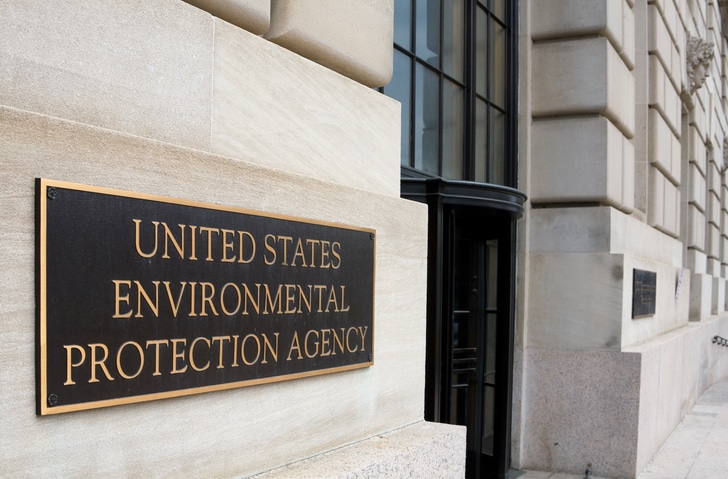Clear communication and balanced oversight are critical for innovation, stewardship and farmers’ bottom lines.
For those of you that know me well, (and those of you who have just seen me in action) you know I can get ‘riled up’ over things.
Over the last four years, one of those things that has really gotten me going has been the Environmental Protection Agency (EPA). You should keep in mind, I started my career as a crop protection sales rep with then Ciba-Geigy, a legacy company of Syngenta, so the EPA has always been part of my life.
Why is the EPA Important to the Seed Industry?
Directly, the EPA exerts control over the products you sell and indirectly have influence on the price.

Let’s think about that.
The EPA is responsible for protecting human health and the environment. Under the Federal Insecticide, Fungicide, and Rodenticide Act (FIFRA), EPA regulates pesticides. Under FIFRA, EPA regulates the sale, distribution, and use of all pesticides, including those produced through genetic engineering. This group includes chemical pesticides, microorganisms, bio-chemicals, and plant-incorporated protectants (PIPs), a type of pesticide intended to be produced and used in living plants, when these are intended to be used as pesticides.
That means that any insect focused biotechnology (not herbicide) falls under EPA’s jurisdiction.
Let’s face it, the EPA is everyone’s favorite punching bag. Their bureaucracy is legendary.
From all appearances, the EPA struggles to understand a biological system made up of biotechnology and seed genetics. That is not that surprising, considering so much of their work breaks along the lines of a chemical compound. However, chemical thinking for biology is not the best thought process when you are making the regulations over an industry. But you do have to start somewhere.
The Rise of Biotech
Since 1995, the combination of seed genetics and seed biotechnology have created a complex system of regulations and patents. When introduced the corn market, Bt-176, Bt11 and Mon810 revolutionized our approach to insect control. The rise of biotechnology was truly a revolutionary step in agriculture, and I count myself as fortunate to have lived every step of the way.
With new products come new concepts. While insect resistance management (IRM) had long been practiced with crop protection products, biotechnology brought forth new and untested methods of stewardship called refuge.
While refuge was a new concept when introduced in 1995 with biotechnology, no one can argue its effectiveness. Cry1Ab, the protein involved in Bt11 and Mon810 is still effective today on European Corn Borer, 30 years after introduction. Refuge must be part of that success.
In the intervening years, the industry and EPA have both evolved in our thinking. We are both learning a new system. Now, the biotech market is coming up on 30 years old. It’s more mature. We have moved from single events, to stacked events, to multiple modes of action and multiple stacked events. We must evolve our views again.
Challenges with the EPA’s Biotech Framework
Before he passed away, Tom Burrus of Burrus Seed, brought to my attention the issue of the EPA’s desire to remove single event corn rootworm products from the market. This desire was espoused as a concern for substandard products putting a risk to IRM. A small group of IPSA and ASTA members met with the EPA and had a positive meeting. We believed we were heard. The fact is we were too late, the EPA announced their intentions a few weeks later — all of which we spoke against.
Moving forward to 2020, the EPA announced a new biotech framework for products that I believe is not in the best interest of the industry. Under the cloak of IRM, the EPA can now pronounce biotech products as “non-functioning” and require different stewardship requirements or even removal of old products from the market. I believe in proper stewardship of biotechnology. I also believe that we should protect this technology for future generations. I have seen first-hand insects that are resistant to products and run amuck in the fields.
My concern here is that the framework has unintended consequences of blocking potential post-patent products and precludes looking at alternative control measures. There is a lack of a geographic component — treating crops in all geographies the same.
A Voice for the Seed Industry
Too many times, these policy discussions happen behind the curtain. Part of the reason is that the EPA does not want to open the discussion to all the ‘crazies’ that are out there. I can’t argue with that. There are requirements under the concept of a Federal Advisory Committee that would require just that — a meeting with everyone, regardless of crazy.
Unfortunately, this throws the baby out with the bathwater, because it shuts out the industry including the voice of farmers and seed companies and leaves only the registrants of the technology to voice concerns.
Fortunately, with new leadership, there is an opening to participate in more discussions with the EPA as an industry.
I can’t stress to you the importance I believe in having a clear, direct and transparent dialogue with the EPA. Our industry is complex and for those looking from the outside in, it is always difficult to understand. The result are silly regulations and unworkable restrictions.
Balancing Stewardship and Opportunity
Transparently, I have been angry for years at the EPA. I want to see more options for post-patent traits, more genetic opportunities, more choices and ultimately lower prices for seed companies and farmers. There has to be a place to discuss the science involved in IRM with the mechanisms to allow the normal life of products, which mean changes in economics for companies and farms.












